Your kitchen faucet is one of the most frequently used appliances in your home. Whether you’re filling up a pot, washing dishes, or getting a drink of water, your faucet needs to be functional and reliable.
But how do you know what to look for when choosing the right kitchen faucet for your needs? Since the market is flooded with options, it can get really confusing sometimes to find out your suitable one from all those available options.
That’s why we’ve put together this step-by-step guide on how to choose the right kitchen faucet for your sink.
How to Choose the Right Kitchen Faucet: Step-by-Step
Now, before we go into our detailed discussion, let’s take a glance at the breakdown of our kitchen faucet buying guide.
1. Choose Installation Types
At first, you’ll need to decide on the installation type from the following-
- Countertop-mounted
- Deck-mounted
- Wall-mounted
2. Decide the Number of Faucet Holes, Shape, and Size
Then, you should consider the number of holes and the shape and size of your faucet.
3. Decide Faucet Material
Choosing the right material is crucial for your kitchen’s aesthetics and the faucet’s lifespan. Common materials include-
- Brass
- Stainless Steel
- Bronze
- Zinc Alloy
- Plastic
4. Decide Other Faucet Features
Next, you can move on to choosing the additional features you prefer. These may include-
- Pull Out Spout
- Soap Dispenser
- Water Filter
- Touchless Technology
- Side Sprayer and Pot Filler
- Mini-boiler
5. Now Choose the Finish and Style
Finally, you should choose the finish and style according to your preference. The four most common options are-
- Chrome
- Stainless Steel
- Brushed Nickel
- Copper
Kitchen Faucet Buying Guide - [Step-by-Step ]
Let’s now take a closer look at each of the steps we just listed so you can learn how to choose the right kitchen faucet for your needs.
Step-1: Choose Your Installation Type
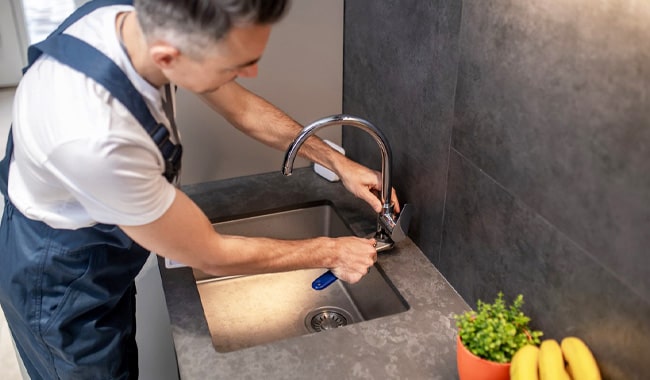
When choosing a kitchen faucet, the first thing you need to do is to determine what type of installation you need. There are three main types to choose from:
Countertop Mounted
A countertop mounted kitchen faucet is mounted on top of your kitchen counter, typically above your sink. It can also be installed on a sink’s backsplash.
Countertop mounted models are best if you do not want to cut through your granite or marble countertops. This style is also ideal if you prefer a large sink and plenty of room to move your faucet around your kitchen to different sinks and locations.
However, this type of kitchen faucet will require more maintenance because it can be susceptible to leaks. You’ll also need to ensure enough space for the faucet’s spout behind your sink.
Deck Mounted
A deck-mounted kitchen faucet is installed on top of your kitchen sink, with no hole in your countertop. If you already have a hole in your countertop, this type of installation might not suit you.
However, if you don’t have a pre-drilled hole, this installation can be a good choice because it lets you wipe leftovers and crumbs directly into the sink or use the space around the faucet to hold soap or other items.
Wall Mounted
A wall-mounted kitchen faucet attaches to the wall above your kitchen sink instead of mounting on your countertop or sink.
This type of installation works well if you have a tiny sink or no room above your sink for a deck mount installation.
It can also work well if multiple people use the sink at once because there will be less space for people to get in each other’s way.
However, wall-mounted faucets can be difficult to install and might require the help of a professional. They can also be more challenging to keep clean because of the hard-to-reach areas around the faucet.
Step-2: Decide the Number of Faucet Holes, Shape, and Size
The next step in choosing the right kitchen faucet is deciding on the number of holes, shape, and size you need.
Faucet Holes
Depending on the design, faucets come with anywhere from one to four holes. The number will determine the handle style you can use for your faucet.
For example, if you have a three-hole sink, you can choose a faucet with two handles, one for hot water and one for cold water. If you have a single-hole sink, you can choose a faucet with a single handle that controls both the hot and cold water.
You will also need to decide on the number of holes for the sprayer. If you want a separate sprayer, you will need an additional hole in your sink or countertop.
Recommended reading: Standard Hole Size For A Kitchen Faucet.
Shape and Size
The shape and size of your sink will also play a role in choosing the right kitchen faucet. You’ll want to make sure that the faucet you choose is proportional to the size of your sink.
A large, bulky faucet can overwhelm a small sink, while a large sink might look odd with a small, delicate faucet.
A good rule of thumb is that if your faucet has an overall height of 17.3-inch and a spout reach of 9.3-inch, it can be a reasonable choice for any modern sink that is 22 x 30 inches or larger. Considering the wall cabinets above your sink is also important.
If you have a lot of space above your sink, you might want to choose a taller gooseneck-style faucet to fill pots and pans more easily.
Likewise, you’ll want a shorter faucet within a limited space so it doesn’t get in the way.
You’ll also want to ensure your faucet’s shape is in keeping with the overall style of your kitchen. For example, a country kitchen might look best with a more traditional-style faucet, while a contemporary kitchen might benefit from a more modern-looking faucet.
[ On a side note: want to know more details about the size of a kitchen faucet? Then, click here. ]
Step-3: Decide on the Faucet Material
The next step in choosing the right kitchen faucet is to decide on the material. Material choices for kitchen faucets include brass, stainless steel, bronze, zinc alloy, and plastic.
Brass
Brass is the most commonly preferred material for kitchen faucets because it is durable and easy to care for.
These faucets are available in multiple finishes and colors and are priced mid-range. A natural finish gives them a rustic appeal. Brass also develops a charming patina over time, giving it a beautiful antique look.
Bronze
Bronze is a more traditional-looking material that can give your kitchen a classic appeal. These faucets are fairly durable and require little maintenance.
However, you might need to wipe them down more often than other materials to prevent them from developing a green, drab-looking patina.
Zinc Alloy
Zinc alloy is a less expensive alternative to brass that can still give your kitchen a high-end look. These faucets are usually plated with another metal such as chrome or nickel.
While they might not be as durable as brass or stainless steel, they’re still reasonable for a budget-friendly kitchen faucet.
Stainless Steel
Stainless steel has a modern look that can complement various kitchen styles. While it’s the most durable faucet material, it’s also the costliest. Some manufacturers use stainless steel finishes on a brass faucet rather than pure stainless steel, but they’re usually lower quality.
In addition, several stainless steel faucets are sometimes coated with a clear coating that protects against water spots and fingerprints.
Plastic
Plastic is the most budget-friendly option for a kitchen faucet. These faucets are usually made from ABS plastic, which is somewhat durable and easy to care for.
However, they might not have the same high-end look as faucets made from other materials.
Recommended Reading: Best Faucet Materials for Kitchen
Step-4: Decide Other Faucet Features
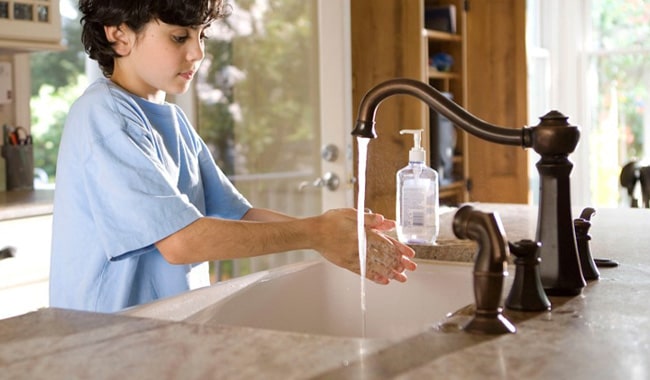
Once you’ve decided on the basics, you can move on to other features that might be important to you. These may include-
Pull-Out Spout
A pull-out spout comes in handy for washing large pots and pans faster. It also comes in handy for rinsing produce or filling pitchers of water. These types of faucets usually have a hose that extends about 12 inches.
Some models have a sprayer that can be detached from the main faucet body. If you prefer either the sprayer or the faucet, this is a good choice.
Other models have a side sprayer attached to the main faucet body. These are less common but can be an excellent space-saving option if you don’t have a lot of room on your countertop.
Recommended Reading: Best Pull Down Kitchen Faucets Review
Soap Dispenser
If you want a truly hands-free experience, you might want to look for a kitchen faucet with a built-in soap dispenser.
These are convenient because you don’t have to worry about keeping track of a separate soap dispenser. Plus, they can help to keep your countertop looking clean and clutter-free.
Remember that you’ll need to refill the soap dispenser periodically, so make sure it’s easy to access. Some models have a small opening on the top of the dispenser, while others have a larger opening on the side.
Water Filter
If you’re concerned about your water quality, you might look for a kitchen faucet with a built-in water filter. These filters can remove impurities such as lead, chlorine, and sediment. They typically need to be replaced every few months, but they can help improve your water’s taste and quality.
Some kitchen faucets also come with a built-in filtered water dispenser. This can be a convenient way to have filtered water on hand for cooking or drinking. However, keep in mind that you’ll need to refill the filter periodically.
Touchless Technology
If you’re looking for the latest and greatest in kitchen faucet technology, you might want to consider a touchless model.
[ NB. Want to know how does a touchless kitchen faucet work? Click here. ]
These faucets allow you to turn on the water with just a hand waving. They’re great for busy cooks who don’t want to waste time fumbling with a handle.
Recommended reading: Touch vs Touchless Kitchen Faucet
Side Sprayer and Pot Filler
A side sprayer is a separate attachment that you can use to wash produce or fill water pitchers. These are convenient if you don’t have a lot of room on your countertop for a pull-out spout.
A pot filler is a high-arc faucet mounted on the wall above your stove. These are convenient for filling large water pots without carrying them to the sink.
Mini-Boiler
Some kitchen faucets come with a built-in mini-boiler that can be used to quickly heat up water. This can be a convenient way to have hot water on hand for cooking or cleaning. However, keep in mind that you’ll need to refill the boiler periodically.
Step-5: Now Choose Your Finish
Once you’ve decided on the style and features you want, it’s time to choose a finish. The most common finishes for kitchen faucets are chrome, stainless steel, brushed nickel, and copper.
Chrome
Chrome finish faucets are a classic option for any kitchen. They’re sparkly, shiny, and easy to clean, which’s why they’re so popular in restaurants and professional kitchens.
The reflective silver finish is also scratch-resistant and budget-friendly. However, it can show water spots and fingerprints more quickly than other finishes.
Stainless Steel
Stainless steel is a durable material that’s resistant to scratches and corrosion. The finish is more matte, with a darker tone than chrome.
It’s a good choice for busy kitchens or minimalist spaces with clean lines and sparse décor. However, steel is more likely to show fingerprints and water stains.
Brushed Nickel
Brushed nickel has a warm, muted look that easily coordinates with other hardware in your kitchen. It has a coppery tone, though it’s not actually copper, and goes well in homes that feature warm tones like browns and yellows. It’s also resistant to scratches and corrosion.
Copper
Copper faucets are highly sought-after for their upscale look with a warm golden hue and the beautiful patina they develop over time.
It’s an excellent choice for rustic or country-style kitchens. However, copper does require more maintenance than other types of finishes due to its tendency to tarnish over time.
Some Pro Tips While Choosing A Kitchen Faucet
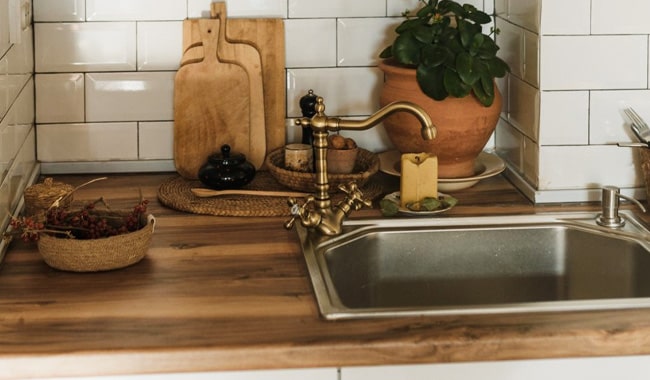
Here are a few more things to keep in mind while you’re shopping for a kitchen faucet:
Check the Spout Height and Reach
If you’re replacing an old faucet, measure how far out it sticks over the sink, then look for a new one with comparable specs. You also need to know how high or low it sits above the sink to be sure your new one will fit under your existing cabinets.
Choose Ceramic Valves
Ceramic valves are more durable and less prone to leaks than others—and they’ll save you money in the long run since they won’t wear out as quickly.
Some Finishes are Tougher than Others
Keep in mind that some finishes are stronger than others. Oil-rubbed finishes have become a popular choice because they look beautiful and offer some extra protection against wear and tear.
Consider the Water Pressure
It’s hard to get a good, strong stream of water if the pressure is too low. Hence, you’ll want to choose a kitchen faucet designed to work well in your area.
A good faucet will be made with a valve that enables you to adjust the flow to get the perfect amount of water for your purposes. This is especially important when you’re trying to fill up a large pot or when you need to rinse off food scraps after chopping.
A Single Handle Is More Convenient
While two-handled faucets may look more traditional, they’re not as convenient to use. A single-handled faucet is much easier to operate since you can adjust the water temperature and flow with one hand while you’re doing something else with the other.
Pull-Down Sprayers Are Better than Side Sprays
Side sprayers are the old-fashioned way to rinse off your dishes, but they’re not as convenient as a pull-down sprayer.
Pull-down sprayers offer more flexibility and range of motion, so you can reach every corner of your sink. Besides, they’re easier to use since you don’t have to hold down a button while you spray.
Look for a warranty
When you’re spending money on a quality kitchen faucet, you want to be sure it will last. That’s why it’s essential to look for a model with a warranty, which can be anywhere from six months to three years.
Some renowned brands like Moen, Delta, and Kraus even offer lifetime warranties for their selected products. When you buy a product with a warranty, you have peace of mind knowing it can be replaced or repaired if there are any problems down the line.
[ On a side note: If you are interested in buying a Moen kitchen faucet, you can read our 13 best Moen kitchen faucets reviews, here. ] Recommended reading: Moen Vs Delta Kitchen Faucet.
FAQs
Here, we have answered some of the most frequently asked questions about kitchen faucets to help you make an informed purchase decision.
- Is it difficult to install a kitchen faucet?
No, it is often not that difficult to install a kitchen faucet. In fact, many people choose to do it themselves to save money. However, if you are not confident in your ability to do it yourself, you can always hire a professional.
- How much does it cost to have a kitchen faucet installed?
The cost of having a kitchen faucet installed will depend on the complexity of the job and who you hire to do it.
The average cost to install a kitchen faucet is between $100 and $200. And if you choose to do it yourself, it will obviously cost less than hiring a professional.
- How to choose kitchen faucet height?
There is no definitive answer to this question since it will depend on your own personal preference and the height of your sink.
However, it’s usually best to choose a kitchen faucet around 10 inches tall as a general rule. This will ensure that it is high enough to be easily used but not so high that it gets in the way.
- Do I need to caulk around the kitchen faucet?
Caulking around the kitchen faucet is not strictly necessary, but it is generally a good idea. This will help seal the faucet area and prevent water from seeping behind it.
- Can I replace a kitchen faucet myself?
Yes, it is possible to replace a kitchen faucet yourself if you have some basic handyman skills. However, if you are not confident, it is always best to hire a professional.
- How long does it take to replace a kitchen faucet?
It’ll depend on the faucet model, but installation is typically quick and easy. It shouldn’t take you more than a couple hours at most.
- How much should a plumber charge replace a kitchen faucet?
If you hire a professional to replace your kitchen faucet, they will typically charge by the hour, which is around $100-$120 per hour on average. However, the total cost will depend on the job’s complexity and your location.
- What do I need to buy to replace the kitchen faucet?
To replace your kitchen faucet, you will need to purchase a new faucet and any necessary installation hardware. You may also need to buy some supplies like caulk, wrench, pliers, screwdriver, and a putty knife.
Final Thoughts
A well-functioning faucet is a must in any kitchen. The right faucet is key to your sink’s functionality, safety, aesthetics, and tons of other factors.
By knowing its parts, understanding its primary purpose, and looking into the different options you have when shopping around, you are sure to end up with a great kitchen faucet that will last for years to come.
So, now that you know how to choose the right kitchen faucet, what are you waiting for? Start shopping around and find the perfect one for your home today.
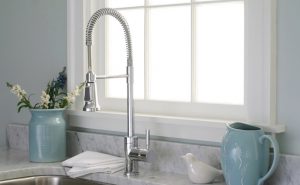
How to Choose a Kitchen Faucet
In any home, the kitchen is the command center. This is where you will prepare meals, chat about the day with your loved ones, clean
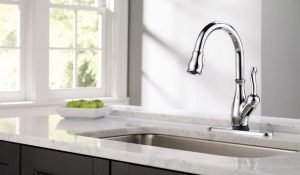
Delta Faucet 9178T-AR-DST Kitchen Sink Faucet Review
Whenever you are thinking about installing a new faucet or replacing the old one then you might need some proper idea about the faucet you
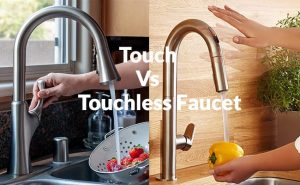
Touch vs Touchless Kitchen Faucet With Pros and Cons
Lord! Touchless kitchen faucets have already blown our minds. I highly presume that you’re one of them. Aren’t you? wait! I think you’ve already disregarded touch faucets.
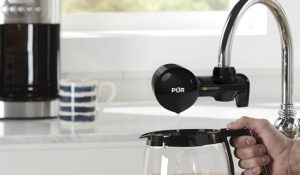
Top 12 Best Faucet Water Filters Review with Ultimate Buying Guide
When it’s about choosing a filtration system, most people try to get the healthiest one possible for their families within their budget. Faucet filters are
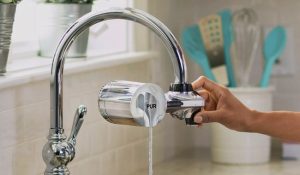
Are Faucet Filters Effective?
Even though people get already treated supply water, every four out of ten American households prefer using a home water treatment unit of some kind.
Kitchen Faucet Brands To Buy and Avoid | [Penny and Time Saved]
In our kitchen faucet buying guide we have shared lot of things you must consider while purchasing the best kitchen faucet. You’ll get numerous kitchen





